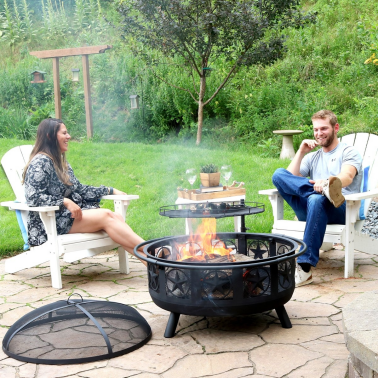The Origins: Fire Pits and Early Cooking
The earliest form of controlled fire was the fire pit, a simple depression in the ground used for warmth, protection, and cooking. Archaeological evidence suggests that humans have been using fire pits for over 400,000 years. These primitive hearths allowed our ancestors to roast meat, making food safer and more digestible.
As settlements grew more permanent, so did cooking methods. The fire pit evolved into raised stone or clay hearths, reducing smoke inhalation and improving heat distribution. This laid the foundation for more advanced cooking tools, including early versions of heating stoves.
The Rise of Heating Stoves and Indoor Cooking
With the advent of agriculture and permanent dwellings, the need for efficient indoor cooking led to the development of heating stoves. Ancient civilizations, such as the Chinese and Romans, built brick or metal stoves to optimize heat retention. These early heating stoves were crucial for baking bread, boiling water, and preparing stews.
By the Middle Ages, cast iron heating stoves became popular in Europe, offering better temperature control than open fires. This innovation not only improved cooking efficiency but also reduced the risk of house fires. The Industrial Revolution further refined heating stoves, introducing coal and wood-burning models that became household staples.
Barbecue Grills: From Pit to Portable Perfection
While heating stoves dominated indoor cooking, outdoor culinary traditions flourished with barbecue grills. The concept of grilling over an open flame dates back to indigenous cultures in the Americas, where slow-cooking meat over a fire pit was a communal activity.
The 20th century saw the mass production of barbecue grills, making them accessible to households worldwide. Charcoal grills gained popularity in the 1950s, followed by propane and electric models. Today, barbecue grills come in various styles, from compact portable units to high-end smokers, reflecting both tradition and innovation.
Modern Innovations and Cultural Impact
The evolution of barbecue grills, heating stoves, and fire pits continues to influence modern lifestyles. Advanced heating stoves now incorporate smart technology for precise temperature control, while eco-friendly designs reduce emissions. Fire pits have transitioned from rustic campfires to stylish backyard fixtures, often featuring gas ignition systems.
Meanwhile, barbecue grills remain a symbol of outdoor leisure, with competitions and festivals celebrating grilling techniques worldwide. Whether it’s a family gathering around a fire pit or a chef mastering a high-end grill, these tools highlight humanity’s enduring connection to fire and food.
Conclusion
From ancient fire pits to sophisticated barbecue grills and efficient heating stoves, the history of cooking technology mirrors human ingenuity. These innovations have not only improved survival and nutrition but also enriched social traditions. As technology advances, the essence of gathering around a flame—whether for warmth, cooking, or camaraderie—remains timeless.
By understanding this journey, we appreciate how barbecue grills, heating stoves, and fire pits have shaped—and continue to shape—our daily lives.

